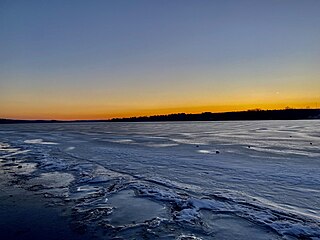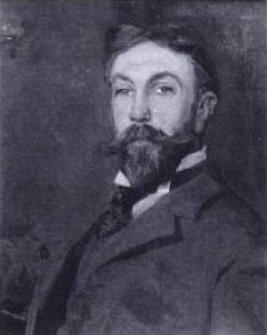Related Research Articles

Bigfoot, also commonly referred to as Sasquatch, is a large and hairy human-like mythical creature alleged by some to inhabit forests in North America, particularly in the Pacific Northwest. Bigfoot is featured in both American and Canadian folklore, and has become an enduring icon in popular culture.

The Loch Ness Monster, affectionately known as Nessie, is a mythical creature in Scottish folklore that is said to inhabit Loch Ness in the Scottish Highlands. It is often described as large, long-necked, and with one or more humps protruding from the water. Popular interest and belief in the creature has varied since it was brought to worldwide attention in 1933. Evidence of its existence is anecdotal with a number of disputed photographs and sonar readings.

The hippogriff or hippogryph, is a legendary creature with the front half of an eagle and the hind half of a horse.

Hague is a town in northeastern Warren County, New York, United States located on the scenic Lake George. It is part of the Glens Falls Metropolitan Statistical Area. The population was 854 at the 2000 census. The town was named after the city The Hague in the Netherlands.
Joey Skaggs is an American prankster who has organized numerous successful media pranks, hoaxes, and other presentations. Skaggs is one of the originators of the phenomenon known as culture jamming. Skaggs has used Kim Yung Soo, Joe Bones, Joseph Bonuso, Giuseppe Scaggioli, Dr. Joseph Gregor, and the Rev. Anthony Joseph as aliases.

Fort Bridger was originally a 19th-century fur trading outpost established in 1842, on Blacks Fork of the Green River, in what is now Uinta County, Wyoming, United States. It became a vital resupply point for wagon trains on the Oregon Trail, California Trail, and Mormon Trail. The Army established a military post here in 1858 during the Utah War, until it was finally closed in 1890. A small town, Fort Bridger, Wyoming, remains near the fort and takes its name from it.

The Cardiff Giant was one of the most famous archaeological hoaxes in American history. It was a 10-foot-tall (3.0 m), roughly 3,000 pound purported "petrified man", uncovered on October 16 1869 by workers digging a well behind the barn of William C. "Stub" Newell, in Cardiff, New York. He covered the giant with a tent and it soon became an attraction site. Both it and an unauthorized copy made by P. T. Barnum are still being displayed. P.T. Barnum's is on display at Marvin's Marvelous Mechanical Museum in Farmington Hills, Michigan.

The Kensington Runestone is a slab of greywacke stone covered in runes that was discovered in central Minnesota, USA, in 1898. Olof Öhman, a Swedish immigrant, reported that he unearthed it from a field in the largely rural township of Solem in Douglas County. It was later named after the nearest settlement, Kensington.

Lake George, nicknamed the Queen of American Lakes, is a long, narrow oligotrophic lake located at the southeast base of the Adirondack Mountains, in the northeastern portion of the U.S. state of New York. It lies within the upper region of the Great Appalachian Valley and drains all the way northward into Lake Champlain and the St. Lawrence River drainage basin. The lake is situated along the historical natural (Amerindian) path between the valleys of the Hudson and St. Lawrence Rivers, and so lies on the direct land route between Albany, New York, and Montreal, Quebec, Canada. The lake extends about 32.2 mi (51.8 km) on a north–south axis, is 187 ft (57 m) deep, and ranges from one to three miles in width, presenting a significant barrier to east–west travel. Although the year-round population of the Lake George region is relatively small, the summertime population can swell to over 50,000 residents, many in the village of Lake George region at the southern end of the lake.

Taughannock Falls State Park is a 750-acre (3.0 km2) state park located in the town of Ulysses in Tompkins County, New York in the United States. The park is northwest of Ithaca near Trumansburg.
The Indian rope trick is a magic trick said to have been performed in and around India during the 19th century. Sometimes described as "the world’s greatest illusion", it reputedly involved a magician, a length of rope, and one or more boy assistants.

Spirit photography is a type of photography whose primary goal is to capture images of ghosts and other spiritual entities, especially in ghost hunting. It dates back to the late 19th century. The end of the American Civil War and the mid-19th Century Spiritualism movement contributed greatly to the popularity of spirit photography. Photographers such as William Mumler and William Hope ran thriving businesses taking photos of people with their supposed dead relatives. Both were shown to be frauds, but "true believers", such as Sir Arthur Conan Doyle, refused to accept the evidence as proof of a hoax.

Silver Lake is a hamlet in Wyoming County, New York, United States. It is located on New York State Route 39 south of the village of Perry in the Town of Castile. It is named for the nearby lake to the west, which extends from the village of Perry south to Silver Lake State Park near Silver Springs. Silver Lake's main attractions include its scenery, fishing and boating, and its location near Letchworth State Park.

In Canadian folklore, Cressie is the nickname given to an eel-like lake monster said to reside in Crescent Lake, Robert's Arm, Newfoundland and Labrador, Canada. The name is a portmanteau of Crescent Lake and Nessie, the nickname given to the Loch Ness Monster. The monster has been described as resembling a large dark brown eel around 15 feet in length with a long, sleek body and as "looking long and shiny, and having a fish-like head." Claims of Cressie being sighted began in the 1950s, and continue to the present day.
The Flathead Lake Monster is a mythical lake monster within Montana folklore that is purported to dwell in Flathead Lake in northwestern Montana, United States.
Hoaxes and legends have played a significant role in the history of upstate New York. For example:
Lt. Col. William Robert Royal was an American scuba diver in the United States Air Force and amateur archeologist. In the late 1950s, he and other scuba divers found artifacts and human bones from at least seven individuals in Warm Mineral Springs. A partially burned log found in association with some of the human bones was radiocarbon dated to about 10,000 years ago. If the bones were the same age as the log, then the bones were the oldest known evidence of human occupation in Florida at the time.

Harry Willson Watrous was an American artist who received an academic education in France. His paintings included genre scenes, stylized figural works, landscapes, nocturnes, portraits, religious subjects, and still lifes. His 1913 painting The Drop Sinister has been called the first known portrait of an American interracial family. He is perhaps best known for his enigmatic paintings of sophisticated women, often darkly dressed and seen in profile.